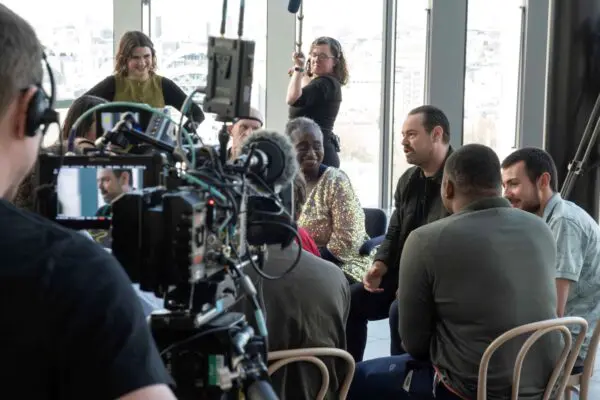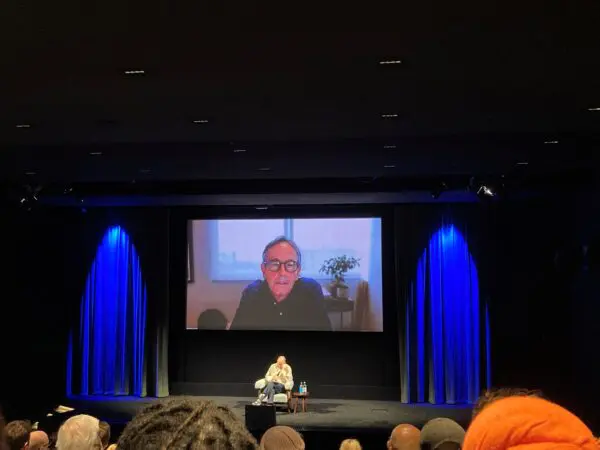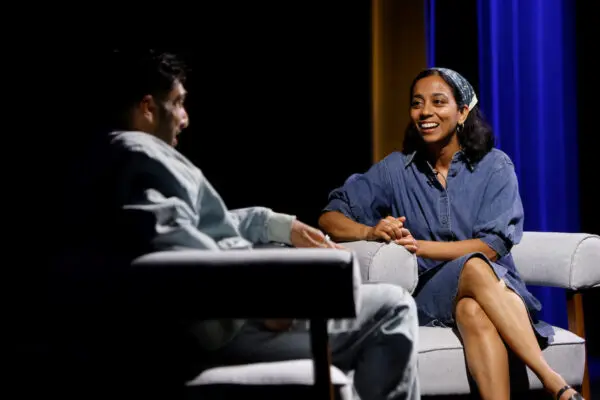Following years as a musician working collaboratively in various bands, Gilroy did “the second bravest thing” he has done in his life and quit music, worked in bars for five or six years in which time he developed his craft and went on to sell his first script for The Cutting Edge at the age of thirty.
Establishing original screenplays as the lecture’s focus, Gilroy emphasized the importance of innate creativity and innovation. “We make stuff up”, he insisted; “there’s a level of romance and imagination to this that isn’t found in any screenwriting book or seminar”. The starting point for Gilroy needs to be something small and specific that can be elaborated and built upon. Whether it is “a character, a moment in time, a point in history”, the script needs one precise kernel from which everything else stems.
Showing a clip from legal thriller Michael Clayton, Gilroy approached the development of story and the centrality of two facets: dialogue and character. Gilroy was explicit in defining “human behaviour” as the “deal breaker” for a screenplay: “whether you’re writing orcs or Anne Boleyn, it makes no difference”, Gilroy asserted, “the quality of your writing is absolutely capped by your understanding of human behaviour”.
Language also proved the ultimate medium for Gilroy, who expressed how “the characters have to rise and it has to come from dialogue for me”. Highlighting this point with a scene from The Bourne Identity, Gilroy progressed to the importance of making the screenplay realistic, stating that “you need to become a journalist for the movie that’s inside your head”.









